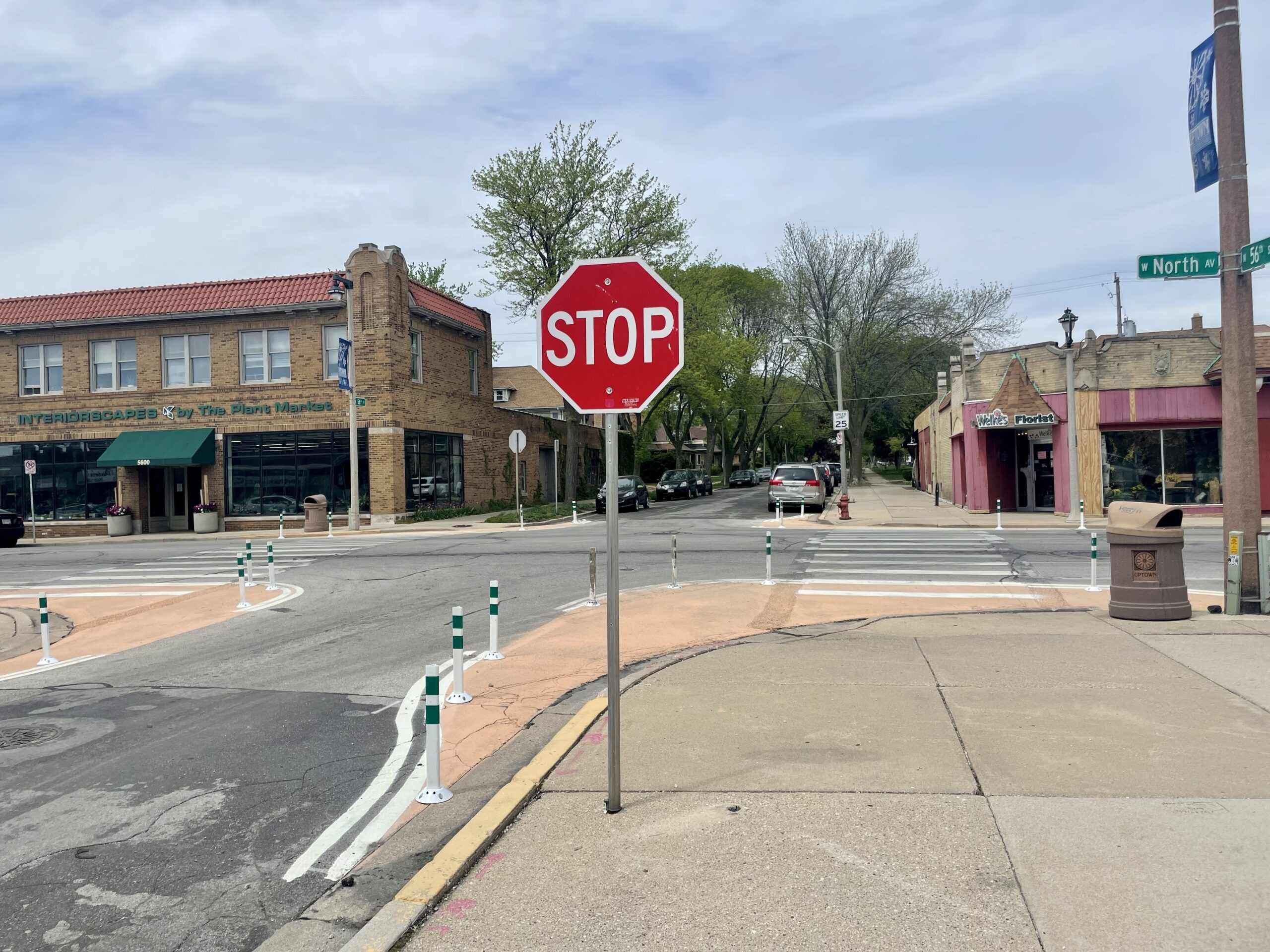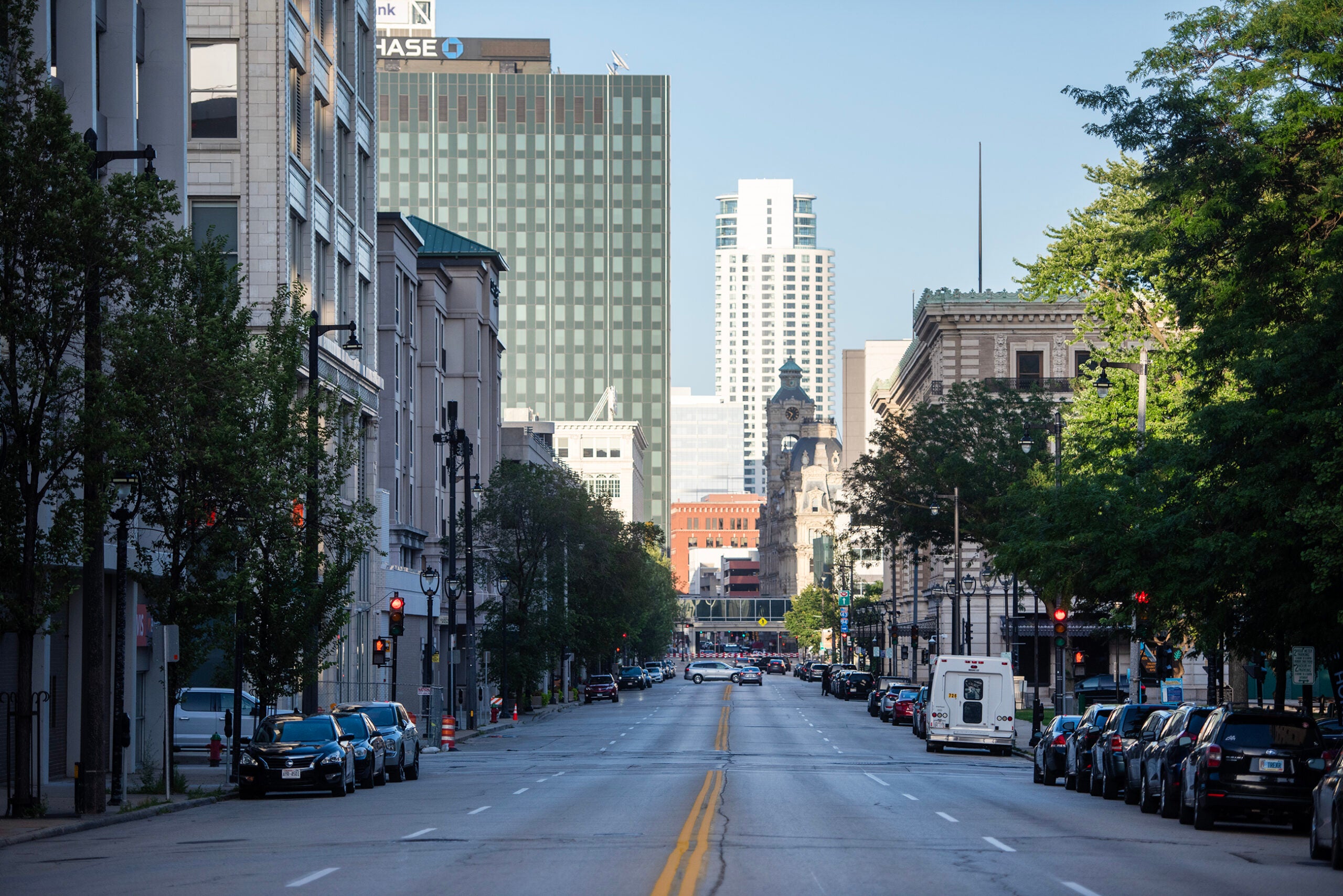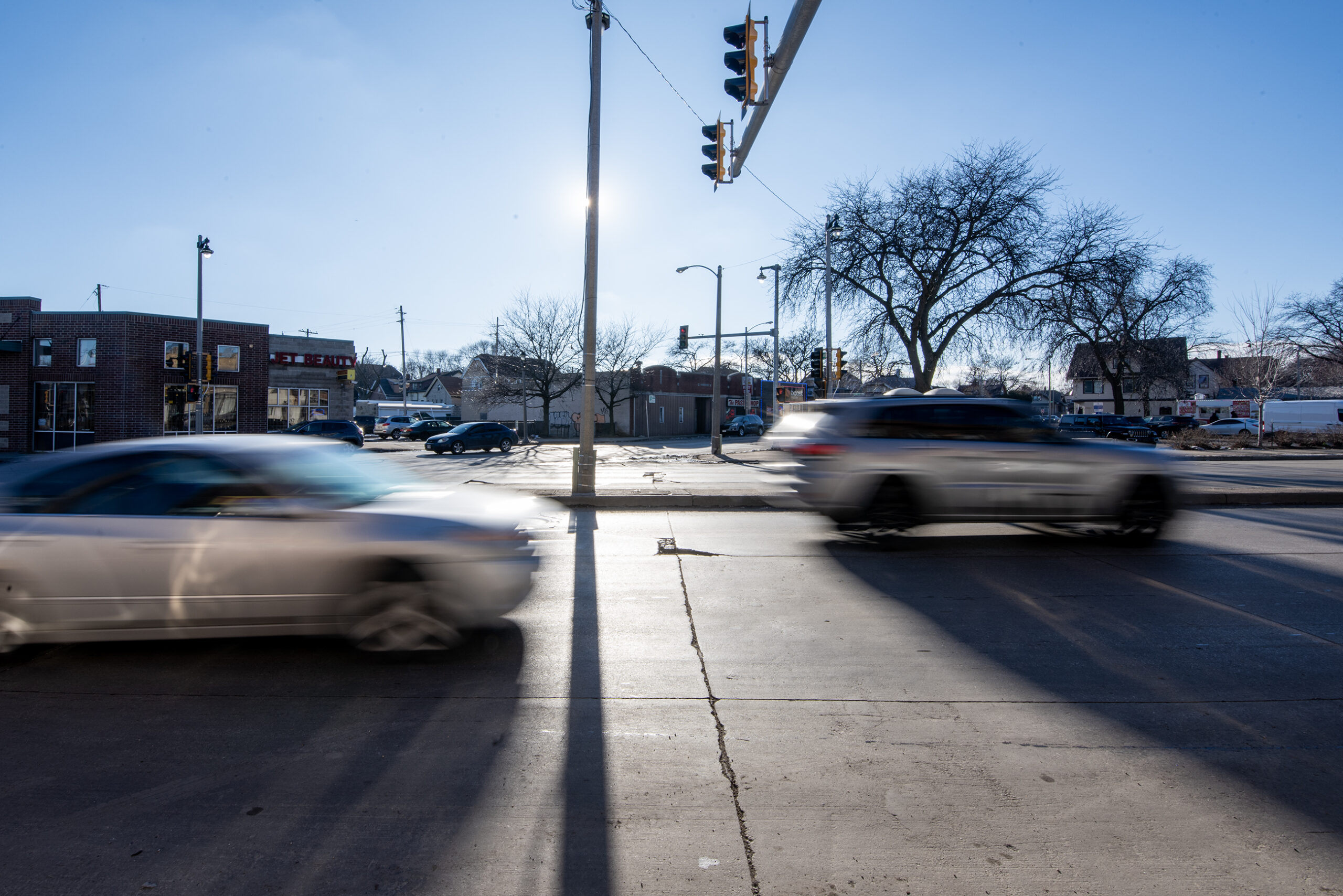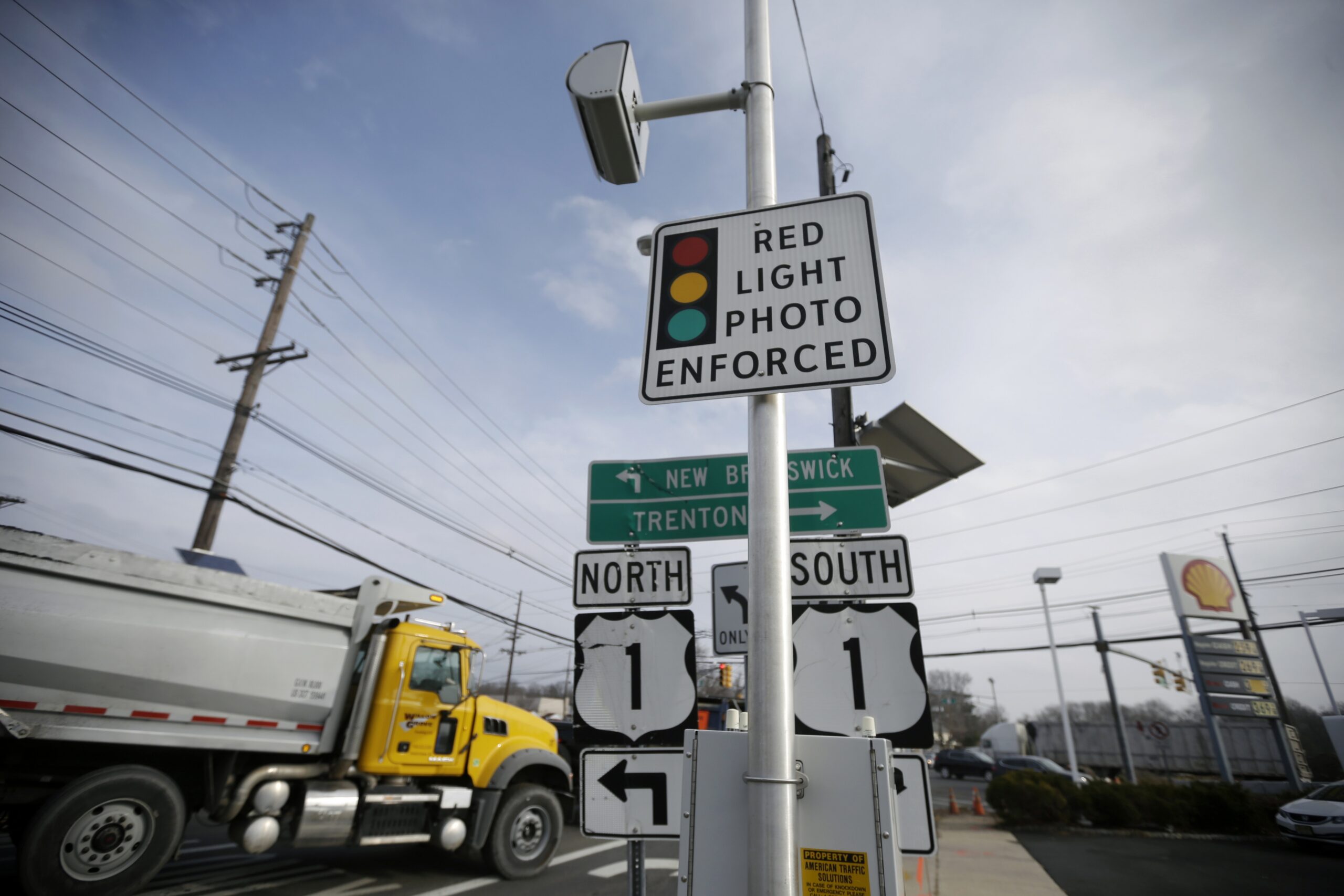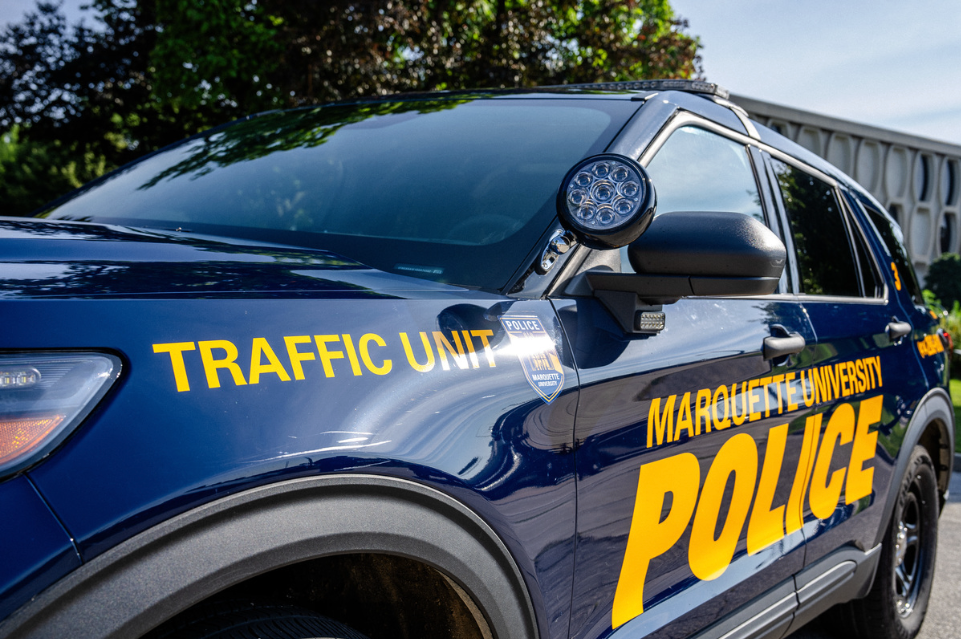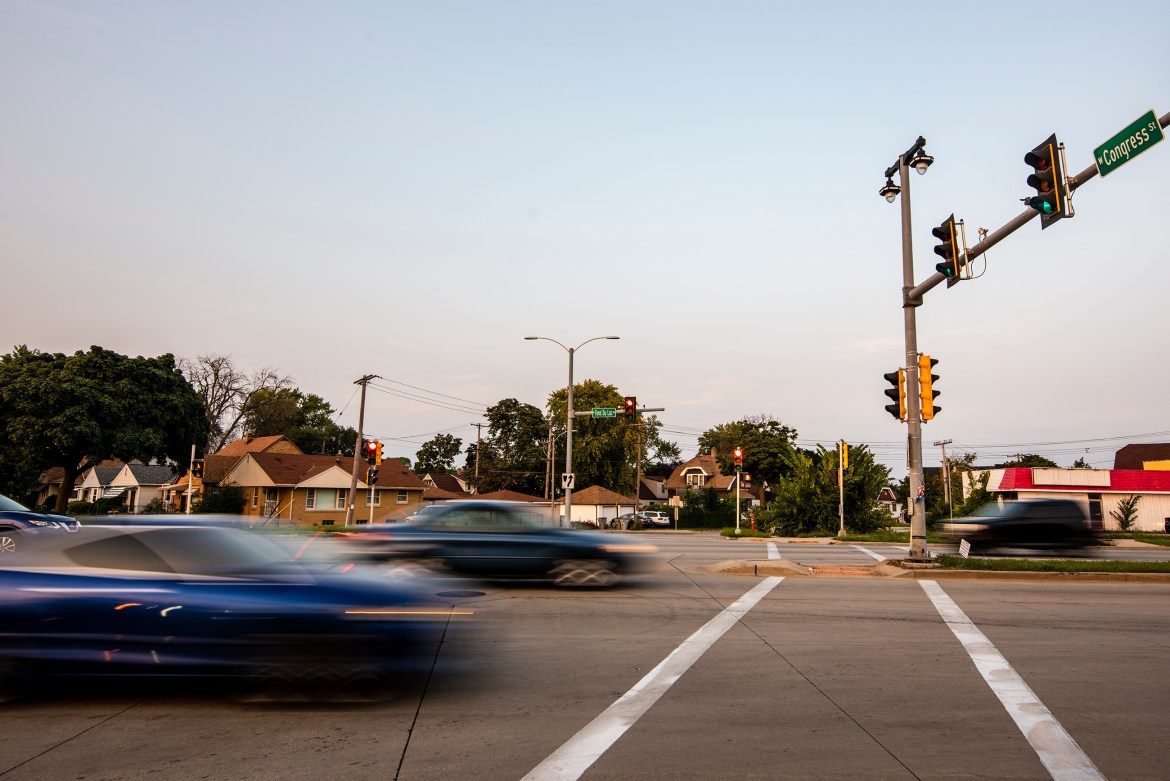The City of Milwaukee is touting the success of its recent efforts to add traffic calming infrastructure to some of its streets to reduce reckless driving and speeding.
Mayor Cavalier Johnson held a press conference last week to share data showing varying degrees of lowered speeds in areas where the city built out curb extensions, protected bike lanes and speed humps.
University of Wisconsin-Milwaukee urban planning professor Robert Schneider said the results in Milwaukee help show other Wisconsin cities a path toward safer streets for pedestrians, cyclists and all users of the road.
News with a little more humanity
WPR’s “Wisconsin Today” newsletter keeps you connected to the state you love without feeling overwhelmed. No paywall. No agenda. No corporate filter.
He spoke to WPR’s “Wisconsin Today” about how traffic calming efforts work and how cities are changing the way they think about roads.
The following interview has been edited for clarity and brevity.
Rob Ferrett: What kind of things are we talking about when we talk about traffic calming, as opposed to something like speeding enforcement?
Robert Schneider: Traffic calming is in the engineering side of treatments to try to address speeding and reduce reckless driving. That’s changing the design of roadways. It may include changing how lanes are configured.
In some cases, the city’s added traffic circles, so cars have to slow down to go around those circles, or curb extensions, which reduce the crossing distance for pedestrians at a crosswalk or intersection and help drivers slow down when they’re making turns.
It may include protected bike lanes where parking is not on the curb anymore. This also helps slow down vehicles, because they need to think about the infrastructure that’s there.
RF: What do you make of what you’re seeing Milwaukee try to do to slow down speeding and reckless driving?
RS: It’s really neat that the city had the forethought to collect data, both before and after they’ve done a number of these traffic calming projects.
And so, what they presented last week were 14 different studies of these projects, and they measured two different things. One is just the overall changes in the number of drivers who are speeding, which is exceeding the speed limit at all. And then they reported on excessive speeding, which is where drivers were going more than 10 miles an hour over the speed limit. In each one of the examples, the speeds were reduced.
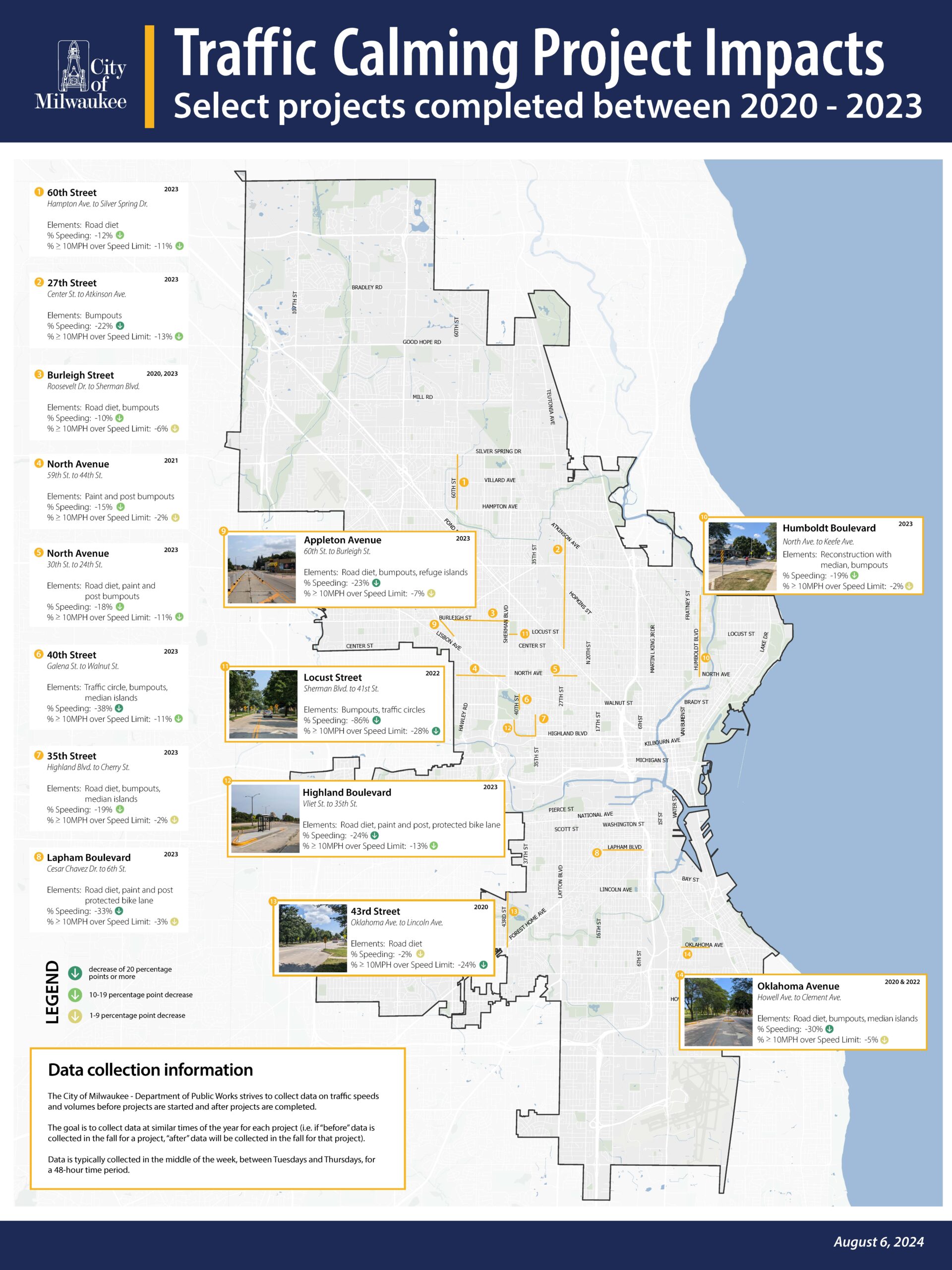
RF: What kind of things do you see in other communities in Wisconsin?
RS: Some of the streets that the City of Milwaukee did their traffic calming projects on are commercial corridors but are also state highways. That’s very similar to smaller cities and towns across the state that may have a state highway as their main street.
So other, smaller communities may be saying, “Hey, you know the results in Milwaukee are showing speed reductions along some of their commercial streets. The commercial street and neighborhood is very similar to our core of downtown, and we could be working with WisDOT.”
RF: There’s a tension here between the use of streets and roads for moving drivers through as smoothly as possible and making space for pedestrians and other users. Are you seeing the balance shift from thinking of these cities’ roads as roads for cars and shifting over to streets for people?
RS: I think we are, especially in cities and in denser neighborhoods where people have seen the effects of high-speed streets on their local neighborhood, restaurants, their shopping areas, and have seen that deteriorate over time.
They recognize that was actually a place where the community came together. So the movement towards slowing down the traffic and making a more pedestrian-friendly space has become something that has unified neighborhoods around that idea.
Even in those places that are a little bit less dense, there are opportunities to still do that: reimagining what are now larger parking lots by commercial retail centers or malls, reimagining places where people can live close to where they go shopping or where they go to work. That can help create these types of places and the streets where people actually want to be out on them, not just traveling through them fast.

